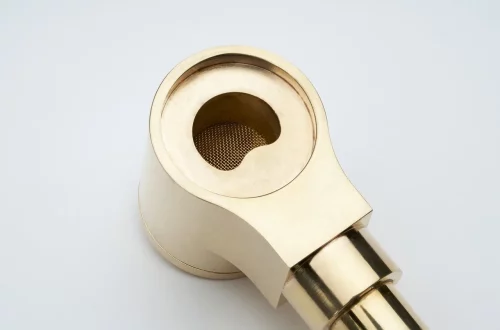
Essential Australian Shepherd Grooming Tips for a Healthy Coat
Taking care of an Australian Shepherd’s coat is essential for maintaining their overall health and well-being. These beautiful dogs are known for their striking appearance, characterized by a thick, double coat that can come in a variety of colors. Although they are often admired for their looks, proper grooming is crucial to prevent various skin issues and ensure their fur remains healthy and vibrant. Regular grooming not only helps to manage shedding but also allows pet owners to check for any underlying skin problems or parasites that may be hiding beneath the fur.
The Australian Shepherd is an active and intelligent breed that thrives on physical and mental stimulation, and their coat requires attention to match their dynamic lifestyle. Grooming can also serve as a bonding experience between the dog and owner, enhancing the relationship while ensuring that your furry friend feels comfortable and loved. Whether you are a seasoned pet owner or a newcomer to the world of Australian Shepherds, understanding the grooming needs of this breed is vital for providing them with the best care possible.
Understanding the Coat Type
The Australian Shepherd’s coat is unique and requires specific care to keep it in optimal condition. Typically, they have a medium-length double coat, consisting of a soft undercoat and a coarser outer coat. This double-layered structure is designed to provide insulation and protection against various weather conditions. The outer coat repels water and dirt, while the undercoat offers warmth, making it essential for the breed’s outdoor lifestyle.
A significant aspect of grooming is understanding the natural shedding cycle of your Australian Shepherd. They shed year-round, but grooming becomes more critical during seasonal changes, particularly in spring and fall. During these times, you may notice increased shedding as they transition between their winter and summer coats. Regular brushing can help manage this shedding and keep your home clean.
Brushing not only removes loose fur but also helps distribute natural oils throughout the coat. This process keeps the fur shiny and healthy while preventing matting, which can be uncomfortable for your dog. Depending on the individual dog’s coat quality, you might need different tools for effective grooming. A slicker brush or an undercoat rake can be useful in keeping your Australian Shepherd looking their best.
It’s also important to note that the coat color may affect how often you need to groom your Australian Shepherd. Darker colors may show dirt and debris more readily, requiring more frequent cleaning compared to lighter shades. Be mindful of your dog’s specific coat type and color, as this will influence your grooming routine.
Brushing Techniques for a Healthy Coat
Brushing your Australian Shepherd is a vital part of their grooming routine that goes beyond just aesthetics. Proper brushing techniques can significantly contribute to the health of their coat and skin. It is essential to brush your dog at least once a week, but during shedding seasons, daily brushing may be necessary to keep their coat in good condition.
When brushing, always start from the head and work your way down to the tail. This method ensures that you are addressing tangles and mats before they become too problematic. Use gentle strokes and avoid pulling on the fur to minimize discomfort for your dog. If you encounter any tangles, use your fingers to gently separate the hairs before going in with a brush.
Investing in the right grooming tools is crucial for effective brushing. A slicker brush is excellent for removing loose fur and preventing matting, while an undercoat rake helps to reach the dense fur beneath the top layer. A bristle brush can also be beneficial for smoothing the coat and distributing natural oils.
If your Australian Shepherd has particularly thick or long fur, consider using a dematting tool for stubborn mats. However, be cautious when using these tools, as improper handling can lead to skin irritation or injury. Always remain patient and calm during the grooming process, as this will help your dog feel more relaxed and cooperative.
Additionally, it’s essential to monitor your dog’s skin during brushing. Look for any signs of irritation, redness, or unusual bumps. If you notice anything concerning, consult your veterinarian, as these could be indicators of underlying skin issues or allergies.
Bathing Your Australian Shepherd
Bathing is another important aspect of grooming that contributes to your Australian Shepherd’s overall health. However, it’s crucial to find a balance, as frequent bathing can strip the coat of its natural oils, leading to dryness and irritation. Generally, bathing every two to three months is sufficient, but this can vary depending on your dog’s lifestyle and activity level.
Before bathing your dog, make sure to brush their coat thoroughly to remove any tangles or mats. This step is essential, as water can make mats tighter and more challenging to remove. Once your dog is free of tangles, gather your supplies, including a dog-specific shampoo, towels, and a non-slip mat for the bathing area.
When selecting a shampoo, look for products specifically formulated for dogs. Human shampoos can disrupt the natural pH balance of your dog’s skin and may lead to irritation. Choose a gentle, moisturizing shampoo that will cleanse the coat without causing dryness.
During the bath, ensure that the water temperature is comfortable—lukewarm is ideal. Start by wetting your dog’s coat thoroughly, avoiding the head initially. Apply the shampoo and lather it into the coat, massaging it into the skin. Be careful around sensitive areas like the ears and eyes. After rinsing thoroughly, you can use a conditioner designed for dogs to help maintain coat moisture.
After the bath, dry your Australian Shepherd as much as possible with a towel before allowing them to shake off excess water. You may also use a blow dryer on a low setting, but be cautious not to frighten your dog.
Lastly, don’t forget to reward your dog with treats and praise after the bath. This positive reinforcement will help them associate bathing with good experiences, making future grooming sessions easier.
Dealing with Common Coat Issues
Despite regular grooming, Australian Shepherds can still experience coat issues that require attention. One of the most common problems is matting, which can occur if the coat is not brushed regularly or if the dog spends time in environments where their coat can get tangled. To prevent mats, establish a consistent grooming routine and pay attention to areas where mats are more likely to form, such as behind the ears, under the legs, and around the collar.
Another issue to watch for is skin irritations or allergies, which can be indicated by excessive scratching, biting, or licking. Allergies can arise from various sources, including food, environmental factors, or flea infestations. If you suspect your dog may have allergies, consult your veterinarian for an appropriate diagnosis and treatment plan.
Fleas and ticks are also common concerns for Australian Shepherds, particularly if they spend a lot of time outdoors. Regular grooming can help you spot these parasites before they become a significant issue. If you find fleas or ticks, use appropriate treatments as recommended by your veterinarian.
Lastly, keep an eye on your dog’s overall health, as changes in coat quality can sometimes indicate underlying health issues. A dull coat, excessive shedding, or bald patches may warrant a visit to the vet for further evaluation. Always prioritize your dog’s health and well-being, and don’t hesitate to seek professional advice when needed.
In conclusion, maintaining the health of your Australian Shepherd’s coat involves a combination of regular brushing, bathing, and monitoring for common issues. By establishing a consistent grooming routine and using appropriate techniques, you can ensure your furry friend remains happy, healthy, and looking their best.
**Note:** This article is not intended as medical advice. Always consult a veterinarian for any health concerns regarding your pet.




